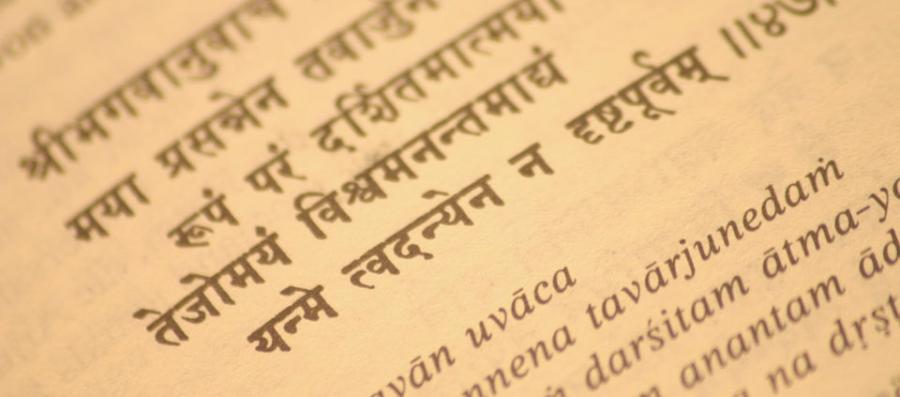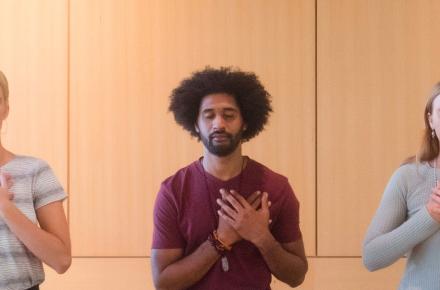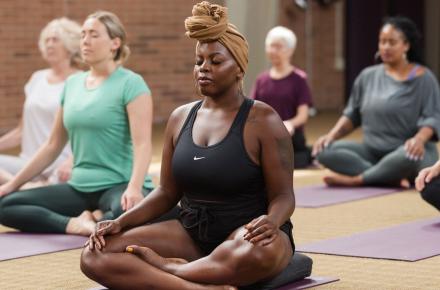Why Sanskrit Matters: A Q&A with Nicolai Bachman

Learning how to pronounce Sanskrit with correct breath, resonance, rhythm, and tongue position can enhance your teaching and personal practice in powerful, subtle ways. That’s according to Nicolai Bachman, E-RYT 500, who has been teaching Sanskrit, chanting, yoga philosophy, and Ayurveda since 1994. In this Q&A, Nicolai explains how familiarity with the ancient language of yoga can deepen your understanding of the practice.
Even if you don’t use Sanskrit words in a class (for example, if you teach in a school or other setting where secular language must be used), how can a deeper understanding of Sanskrit pronunciation and meanings inform your teaching?
Most Sanskrit words have no direct English equivalents. In order to understand the worldview from which the language arose, a basic knowledge of Sanskrit is necessary. Pronunciation may seem trivial, but because sound affects the subtle body, and Sanskrit is designed for the sounds of words to carry their meaning, everything you say has an energetic effect. One will also find the same Sanskrit words popping up in other related areas, such as Ayurveda. Each time a word occurs in a different context, it broadens.
How does knowing the meaning of a posture’s Sanskrit name add depth to our understanding of that particular posture?
Knowing the meaning of a posture name not only helps you remember how to do the posture, but can also link the practice to the ancient tradition. Many postures are named after sages or characters in the mythological stories, often because of their characteristics. Becoming familiar with some of these stories broadens our understanding of the yoga tradition. Furthermore, pronouncing the asana names while in the pose builds vocabulary. Lastly, Sanskrit provides a standard across the globe, allowing you to understand which posture to do no matter what the local language is.
What is the difference between “seed mantras” and “shloka verses,” and what effects can each of these types of mantras have?
Seed mantras are single-syllable sounds with very specific effects. Shloka verses are longer (32 syllables) and thus their effect is more general. The actual effect depends on the mantra itself.
How does studying Sanskrit and mantra help teachers understand the worldview of yoga?
They ground the practitioner in the foundation of the culture. They connect one to the subtle body through sound. If one only practices the postures, then one is limited to the physical body. In this tradition, what affects the subtle body is more important and more powerful, even if it is less obvious, since it is on a more inner level. Like herbal therapy, it is difficult to see the benefits right away; it takes take time and patience for them to work. Mantra is quite esoteric and very old. I cannot emphasize enough the importance of understanding the worldview of the ancient Vedic culture—this will shift one’s perspective inward, and the outer world will look very different.
© Kripalu Center for Yoga & Health. All rights reserved. To request permission to reprint, please e-mail editor@kripalu.org.
















































